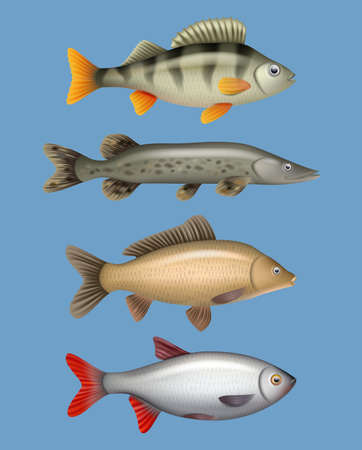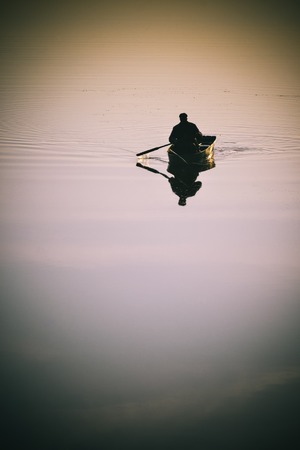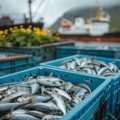1. Setting Off: Mapping the Ultimate British Angling Route
Embarking on a road trip that unites fishing, photography, and folklore across Britain demands more than simply plotting points on a map—it calls for a strategic approach that weaves together iconic waterways with lesser-known angling havens. Begin by identifying Britain’s legendary rivers such as the Test and the Tweed, revered for their storied salmon and trout runs. But don’t overlook enigmatic lochs in Scotland or hidden meres in the Lake District, each brimming with local character and untold tales. Factor in seasonal conditions and regional fishing regulations to maximise your catch rate while embracing Britain’s distinct angling culture. Plan your route to include not just prolific spots but also those steeped in history, where ancient legends linger by the banks and village pubs offer a warm welcome after a day spent casting lines. This methodical preparation ensures every stop offers not only superb fishing but also opportunities to capture evocative images and immerse yourself in the rich folklore that defines Britain’s great outdoors.
Tackle, Tactics, and Tradition: British Angling Techniques
Embarking on an angling road trip across Britain means immersing yourself in a blend of time-honoured tradition and innovative modern methods. Each region, from the Scottish Highlands to the rivers of Kent, boasts unique approaches influenced by local folklore and natural habitats. To maximise your catch—and your storytelling potential—it’s vital to understand both classic and contemporary British fishing techniques, as well as the gear that underpins them.
Essential Tackle: From Hardy Heritage to Modern Marvels
British anglers are renowned for their meticulous attention to tackle selection. While vintage split-cane rods and centrepin reels still have their loyalists—especially among traditionalists fishing chalk streams—carbon fibre rods and advanced spinning reels dominate modern setups. Equally, bait choices reflect both heritage and innovation, with maggots and bread paste sharing tackle bags with artificial lures and boilies.
| Type of Water | Traditional Gear | Modern Gear |
|---|---|---|
| Rivers & Streams | Split-cane rod, centrepin reel, float tackle | Carbon fibre rod, fixed spool reel, braided line |
| Lakes & Reservoirs | Ledger rod, quill floats, worms or sweetcorn bait | Bite alarms, electronic feeders, pellet baits |
| Coastal Waters | Beachcaster rod, multipliers, lugworm bait | Saltwater spinning rod, surfcasting reels, soft plastic lures |
Evolving Tactics: Blending Folklore with Fieldcraft
The British approach to angling often marries centuries-old wisdom with adaptive tactics. For example, the stealthy stalking of wild trout in Welsh streams is steeped in local lore—anglers tread softly and cast upstream with feather-light flies. In contrast, match fishing on English canals leverages precision feeding and timed casting intervals to outwit both fish and competitors.
Region-Specific Regulations: Know Before You Cast
Regulations can vary dramatically across Britain. Closed seasons protect spawning fish in many rivers (notably for coarse species), while catch-and-release policies are strictly enforced in some salmonid waters. Rod licences are mandatory throughout England and Wales but differ for Scotland and Northern Ireland. Before setting up your tripod for that iconic “catch shot,” ensure you’re up-to-date on local bylaws—nothing ruins an angling adventure like an unexpected fine.
Optimising Your Catch: Strategy Meets Sustainability
Savvy road-trippers plan their journey around seasonal runs (like spring salmon in the Tay or autumn pike in the Fens) and adapt their gear accordingly. Modern technology—from bite alarms to smartphone mapping apps—can complement traditional fieldcraft without undermining the rich heritage of British angling. By respecting both tradition and regulation, your road trip becomes not just a quest for big fish but a living exploration of Britain’s cultural waterscape.

3. Capturing the Moment: Angling Photography in the UK Landscape
Documenting your angling road trip across Britain is as much about storytelling as it is about technical skill. The fusion of fishing and photography offers a unique opportunity to capture not only the catch but also the spirit of the journey, shaped by Britain’s evocative landscapes and ever-shifting weather. Below, we delve into strategies and local wisdom for making your photographic record as memorable as your time on the water.
Understanding the British Light and Weather
Britain’s notorious unpredictability when it comes to weather can be both a challenge and an advantage for anglers with a camera in tow. Overcast skies often produce soft, diffused light that brings out natural colours and reduces harsh shadows—a boon for both landscape vistas and close-up shots of prized catches. However, sudden bursts of sunlight after a shower can result in dramatic lighting effects perfect for action shots or reflective waterscapes. Be prepared to adapt quickly: keep your camera accessible and consider a weather-sealed body or protective cover to guard against drizzle, sea spray, or mud.
Best Practices for Landscape Photography
The UK’s fishing hotspots are frequently set against breathtaking backdrops—from the misty Scottish lochs to Cornwall’s rugged coastlines. For expansive scenes, use a wide-angle lens (16-35mm range) to encompass both angler and environment. Incorporate leading lines, like winding rivers or stone bridges, to guide the viewer’s eye through the frame. Early morning and late evening—the so-called “golden hours”—offer warm tones and low-angle light that add depth and atmosphere. Don’t shy away from moody weather; swirling clouds or rising fog can add drama and a sense of folklore to your images.
Techniques for Action Shots
Catching the excitement of the strike or the moment a fish breaks the surface requires anticipation and technical know-how. Use continuous autofocus (AI Servo/AF-C mode) and burst shooting to freeze fast action. Position yourself downstream or at an angle where you can see both angler and fish—this gives context and energy to your composition. In lower light, increase ISO sensitivity but be mindful of noise; modern cameras handle ISO 800–1600 well, especially if you shoot in RAW for later adjustments.
Local Insights: Blending Folklore with Imagery
Britain’s fishing grounds are steeped in legend—think trout pools reputedly haunted by spirits or rivers that inspired Arthurian tales. Engage with local anglers to learn which sites carry historical significance, then frame your photos to reflect these stories: an ancient stone circle on the horizon, or an old pub sign in the background. Adding these narrative elements creates richer memories and gives your trip album unmistakable British character.
Final Tips for Road-Tripping Photographers
Always pack extra batteries, memory cards, and a microfibre cloth for cleaning lenses after rain or sea spray. Use waterproof pouches or dry bags for gear storage during boat trips or hikes along muddy banks. Lastly, respect local customs—avoid disturbing wildlife or trespassing on private land—and always ask permission before photographing fellow anglers. By blending technique with cultural awareness, you’ll craft a visual story as layered as Britain itself.
4. Folklore Along the Waterways
Britain’s rivers, lakes, and rugged coastlines are steeped in centuries-old folklore that add a magical dimension to any angling road trip. As you traverse the country in pursuit of prime fishing spots, you’ll encounter a wealth of myths, legends, and local tales—each entwined with the landscapes and waters that define British angling culture.
Angling Legends and Mythical Creatures
From the mysterious kelpies said to haunt Scottish lochs to tales of monstrous eels lurking in the depths of English rivers, folklore forms an essential part of the British fishing experience. These stories have been passed down through generations, often recounted by seasoned anglers at riverside inns or local pubs after a long day on the water. The table below highlights some iconic examples:
Location |
Legend/Creature |
Folklore Details |
|---|---|---|
Loch Ness, Scotland |
Nessie (Loch Ness Monster) |
Said to be a giant aquatic creature residing in the deep waters; countless sightings reported by anglers and locals alike. |
River Teifi, Wales |
The Afanc |
A water monster believed to drag unsuspecting folk into the river; featured in Welsh mythology as a challenge for local heroes. |
Norfolk Broads, England |
Black Shuck |
A ghostly black dog reputed to roam the waterways, bringing luck or misfortune depending on the encounter. |
Cornish Coast |
Mermaids and Sea Maidens |
Tales tell of mermaids warning fishermen of storms or luring them into peril; many coves still bear names inspired by these stories. |
Integrating Folklore Into Your Angling Adventure
Engaging with these stories during your journey adds depth to each location. Consider visiting local museums or speaking with residents to unearth lesser-known legends that rarely make it into guidebooks. Many historic fishing villages host storytelling nights where folklore is brought vividly to life—an unmissable opportunity for travellers keen on cultural immersion.
The Role of Folklore in Modern Angling Culture
While modern tackle and technology dominate today’s sport, folklore remains at the heart of British angling tradition. It connects communities, inspires conservation efforts, and enriches every cast with a sense of wonder and history. By weaving these tales into your road trip narrative, you’ll leave with more than just photographs and personal bests—you’ll carry home stories from the soul of Britain’s waterways.
5. Hook, Line, and Local: Immersing in British Pub and Food Culture
After a day spent by the water’s edge—flies cast, lines taut, and camera shutters clicking—there is perhaps no greater British tradition than winding down in a local pub. The village inn or riverside freehouse is more than just a place to refuel; it’s an integral chapter in the angler’s journey, steeped in centuries of communal storytelling and folklore. As you travel from Cornwall’s rugged coast to the tranquil lochs of Scotland, every region boasts its own distinct culinary fare and pub culture, each offering a unique window into local life.
A Warm Welcome at Waterside Taverns
In true British fashion, pubs along popular fishing routes are havens for both locals and travellers. Expect muddy boots and waterproofs to be welcomed alongside hearty laughter as fishers recount the day’s near-misses and hard-won catches. Landlords often double as informal guides, quick with tips about tomorrow’s best swims or tales of legendary hauls from yesteryear. Classic ales flow freely, while blackboards tempt with specials like battered haddock, steak and ale pie, or warming bowls of cullen skink in Scotland.
Signature Dishes for the Weary Angler
Refuelling isn’t just about calories—it’s about regional identity. In Yorkshire, sample a plate of Whitby scampi or pikelets fresh from the griddle. Head west to Wales for laverbread and cockles after sea trout fishing on the Teifi. Up north, nothing beats a celebratory supper of haggis and neeps when fishing the Highland lochs. Each meal is an invitation to linger longer, share photographs around the fireplace, and listen as locals weave new layers into Britain’s rich tapestry of angling lore.
Pubs as Storytelling Hubs
The British pub is where anglers become raconteurs. Over a pint of bitter or a dram of whisky, stories grow taller with every retelling—tales not only of fish landed (or lost), but also of strange happenings by moonlit waters and encounters with ancient spirits said to haunt riverbanks. It’s here that folklore blends seamlessly with fact, binding communities together and ensuring that every road trip becomes part of something larger than itself: a living tradition that celebrates the camaraderie and culture at the heart of British angling adventures.
6. Responsible Angling: Conservation and Community in Britain
As you traverse the storied rivers, tranquil lakes, and rugged coastlines of Britain on your angling road trip, embracing responsible fishing practices is essential—not just for your own enjoyment but for the preservation of these cherished waters for generations to come.
Sustainable Fishing Practices
British anglers have long championed sustainability, recognising the importance of maintaining healthy fish stocks and vibrant ecosystems. Practise catch and release where appropriate, use barbless hooks to minimise harm, and adhere strictly to local bylaws regarding size and bag limits. The Environment Agency and organisations such as the Angling Trust provide up-to-date guidance on regulations, ensuring that your pursuit of specimen catches aligns with ecological best practice.
Respecting Local Habitats
Britain’s waterways are not just fishing destinations—they are delicate habitats teeming with wildlife and steeped in history. Tread lightly along riverbanks, avoid disturbing nesting birds or trampling wildflowers, and leave no trace by taking all litter home. By respecting the land and water, you help maintain the beauty and biodiversity that make British angling so unique.
Engaging with the Angling Community
Joining forces with local angling clubs not only enriches your journey with authentic folklore and camaraderie but also strengthens conservation efforts. Many clubs organise river clean-ups, habitat restoration projects, and educational events. Sharing stories over a pint at the village pub or attending a club match connects you to a wider community dedicated to safeguarding Britain’s aquatic heritage.
By weaving sustainable practices into every cast, respecting the environments you visit, and engaging with fellow anglers, you play a vital role in preserving Britain’s legendary fishing spots. In doing so, you ensure that future generations can enjoy the same magical blend of fishing, photography, and folklore that makes an angling road trip across Britain truly unforgettable.

